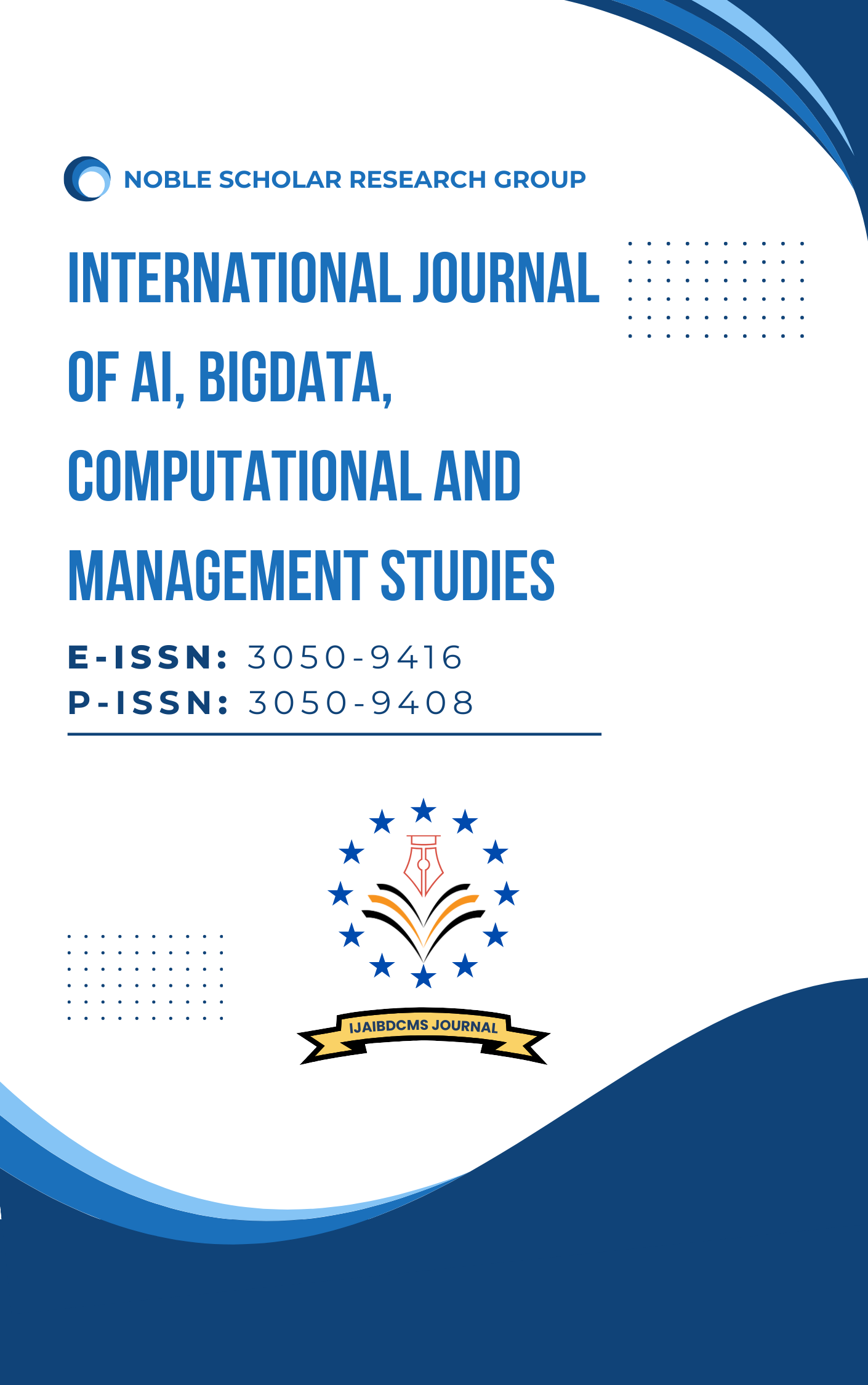Change Management in IT: Navigating Organizational Transformation across Continents
DOI:
https://doi.org/10.63282/3050-9416.IJAIBDCMS-V2I1P105Keywords:
Change Management, IT Transformation, Global Organizations, Digital Strategy, Cross-cultural Communication, Agile Change, Cloud Migration, IT Governance, Remote Teams, Technology Adoption, Organizational Change, Multi-continental ProjectsAbstract
This article investigates how well worldwide IT companies might negotiate the more complexities of change management in the fast growing digital environment. With operations & teams scattered over the world, IT leaders face growing pressure to use methodologies for coordinated change management that fit more corporate goals while allowing regional & cultural diversity. Among the numerous challenges include time zone differences, language barriers, different degrees of technological development, and different employment requirements. The development of digital transformation brings even another level of urgency and complexity, which forces companies to adapt at unheard-of pace. Using a case study approach, this article examines how a multinational IT company overcame obstacles during a major organizational change. The study emphasizes the need for open communication, inclusive leadership & flexible models across more than several lines. To help transitions, practical strategies call for building a strong change culture, using digital collaboration technologies & funding cross-cultural training. This paper underlines that good change management in worldwide IT systems calls for empathy, flexibility, and a deep awareness of people's experiences of transformation across multiple settings rather than just a thorough plan. This paper aims to provide IT expert’s useful advice based on real-world knowledge and specific strategies thus enabling transformation projects in many areas
References
[1] Anderson, Linda Ackerman, and Dean Anderson. The change leader's roadmap: How to navigate your organization's transformation. John Wiley & Sons, 2010.
[2] Hitt, Michael A., Barbara W. Keats, and Samuel M. DeMarie. "Navigating in the new competitive landscape: Building strategic flexibility and competitive advantage in the 21st century." Academy of Management Perspectives 12.4 (1998): 22-42.
[3] Leonard, Anné, and Anské F. Grobler. "Exploring challenges to transformational leadership communication about employment equity: Managing organizational change in South Africa." Journal of Communication Management 10.4 (2006): 390-406.
[4] Olsson, Per, Carl Folke, and Terry P. Hughes. "Navigating the transition to ecosystem-based management of the Great Barrier Reef, Australia." Proceedings of the National Academy of Sciences 105.28 (2008): 9489-9494.
[5] Waddock, Sandra, et al. "The complexity of wicked problems in large scale change." Journal of Organizational Change Management 28.6 (2015): 993-1012.
[6] Miller, David. "Successful change leaders: what makes them? What do they do that is different?." Journal of change management 2.4 (2001): 359-368.
[7] Anusha Atluri. “The Security Imperative: Safeguarding HR Data and Compliance in Oracle HCM”. JOURNAL OF RECENT TRENDS IN COMPUTER SCIENCE AND ENGINEERING ( JRTCSE), vol. 7, no. 1, May 2019, pp. 90–104
[8] Mockus, Audris, and James D. Herbsleb. "Expertise browser: a quantitative approach to identifying expertise." Proceedings of the 24th international conference on software engineering. 2002.
[9] Veluru, Sai Prasad. “AI-Driven Data Pipelines: Automating ETL Workflows With Kubernetes”. American Journal of Autonomous Systems and Robotics Engineering, vol. 1, Jan. 2021, pp. 449-73
[10] Desa, Geoffrey. "Resource mobilization in international social entrepreneurship: Bricolage as a mechanism of institutional transformation." Entrepreneurship theory and practice 36.4 (2012): 727-751.
[11] Taylor, James C. "Fifth generation distance education." Instructional Science and Technology 4.1 (2001): 1-14.
[12] George, Gerard, et al. "Bringing Africa in: Promising directions for management research." Academy of management journal 59.2 (2016): 377-393.
[13] Yasodhara Varma Rangineeni. “End-to-End MLOps: Automating Model Training, Deployment, and Monitoring”. JOURNAL OF RECENT TRENDS IN COMPUTER SCIENCE AND ENGINEERING ( JRTCSE), vol. 7, no. 2, Sept. 2019, pp. 60-76
[14] Desa, Geoffrey. "Resource mobilization in international social entrepreneurship: Bricolage as a mechanism of institutional transformation." Entrepreneurship theory and practice 36.4 (2012): 727-751.
[15] Kupunarapu, Sujith Kumar. "AI-Enabled Remote Monitoring and Telemedicine: Redefining Patient Engagement and Care Delivery." International Journal of Science And Engineering 2.4 (2016): 41-48.
[16] Pettigrew, Andrew M., Richard W. Woodman, and Kim S. Cameron. "Studying organizational change and development: Challenges for future research." Academy of management journal 44.4 (2001): 697-713.
[17] Beer, Michael, R. A. Eisenstant, and Bert Spector. Why change programs don't produce change. Harvard University, 1990.
[18] Anusha Atluri. “Extending Oracle HCM With APIs: The Developer’s Guide to Seamless Customization”. JOURNAL OF RECENT TRENDS IN COMPUTER SCIENCE AND ENGINEERING ( JRTCSE), vol. 8, no. 1, Feb. 2020, pp. 46–58
[19] Miller, David. "Successful change leaders: what makes them? What do they do that is different?." Journal of change management 2.4 (2001): 359-368.
[20] Burke, Ronald J., and Eddy Ng. "The changing nature of work and organizations: Implications for human resource management." Human resource management review 16.2 (2006): 86-94.



